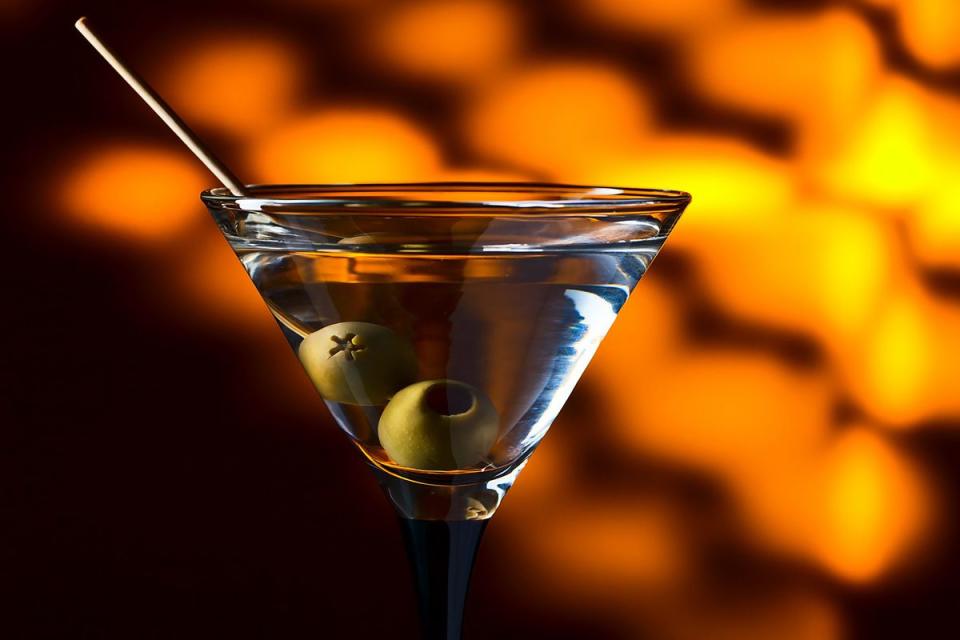Vermouth — Here's What You Need to Know

Getty Images
You could say vermouth gets a bad rap, but the truth is, it doesn't really get much of a rap at all. For many, it's simply that other ingredient in your Martini, but vermouth can play so much more than a supporting role in a cocktail.
"Without vermouth, we wouldn't have Manhattans, Martinis, or Negronis," points out Lydia McLuen, bar manager at Takibi in Portland, Oregon. "Whenever I have a bottle at home, it doesn't last long." If she has dry vermouth, McLuen loves to make 50/50 gin martinis with a lemon twist; with blanc vermouth, her move is to drink it over ice with orange or grapefruit wedges. "If I have sweet vermouth, I drink it either on the rocks with an orange, or in Negronis, Manhattans, or Americanos," she adds. "The possibilities are endless!"
Sound enticing? Here's what you need to know about the aperitif.
How is Vermouth Made?
"Vermouth is an aromatized, fortified wine flavored with various botanicals," says McLuen. Breaking that down, aromatized means the wine has been flavored with fruit, spices, and florals. Common botanicals include cinchona bark, wormwood, angelica root, orange peel, juniper, orris root, and star anise, though ingredients will vary from region to region depending on what's grown locally. For example, Dolin's white vermouth calls for high-altitude alpine flowers, while Matthiasson's Napa Valley take is made with California grapes, sour cherries, and blood oranges.
The phrase fortified means that these wines are topped up with stronger alcohol — such as brandy or a neutral grain spirit — added to the wine to pause the fermentation process and preserve the product.
Vermouth is a historic drink, with recipes and traditions passed down through centuries. Anthony Panzica, beverage director of Atlanta's The Porchetta Group, notes that you can trace vermouth's beginnings back to the 16th century with the Romans, who were making wormwood-infused wines. The name vermouth comes from the French pronunciation for the German word for wormwood, wermwut. Today, many vermouths still call for wormwood as a flavoring.
Vermouth is part of the broader category of aperitifs. "To gain a better understanding of vermouth you must first understand the liqueur and spirit category of Aperitifs," says KP Sykes, owner, and operator of The Armory in Brooklyn. "The etymology of apertif comes from the Latin verb aperire, which means to open. In this case, opening the appetite before a meal. So in short, vermouth is an aromatized and fortified aperitif wine."
Dry Versus Sweet Vermouth
The category extends far beyond that splash of white vermouth in your gin martini. Vermouth is made in Italy, France, and Spain, with every country making theirs in a different manner. "They all vary in sweetness, spice, and overall flavor," says Panzica.
France is known for its dry or chambéry vermouths, which are typically light in color. Panzica notes that they can range from sweet and dry (as is the case with chambéry) to nutty and slightly oxidized (in Marseilles). Overall, they're a bit more herbaceous than they are spicy.
Italy's white vermouths range from sweet to dry, and overall lack the oxidative quality of France's dry vermouths. Panzica also finds that they are a bit bolder in flavors, and herbaceous with a slight vanilla touch. Scarpa Bianco di Torino is one of his favorites — try it on the rocks with a twist. Keep in mind, white vermouths can also be sweet! Keep a look out for bottles marked dry.
"Dry vermouth is leaner, tart, herbaceous, and dry, used in drinks like the martini," McLuen explains.
While McLuen summarizes white vermouth as "rich, tart, floral, and pleasantly sweet," sweet vermouth is a rich, spiced and herbaceous drink, often used in drinks like the Manhattan and the Negroni. It's deep red in color and slightly spiced, balanced out by a subtle sweetness.
In Italy, it's typical to find find Vermouth di Torino, a red vermouth. "It's deep in color and flavor, often leaning towards warm spice notes like orange peel, clove, allspice, and caramel," says Panzica. "When you see a recipe for a cocktail calling for Italian vermouth or sweet vermouth, it's most likely calling for this style."
Meanwhile, Sykes prefers Carpano Antica, a red vermouth with "a slightly bitter taste with a ton of floral notes as well as hints of citrus, cherries, mint, vanilla, and oddly enough, root beer."
Then, there are Spanish vermouths. Panzica finds they live in a realm between Italian and French. "They came about when a few transplants from Torino came to Spain and started making vermouth with Spanish grapes." Even though most of these brands are relatively new, they make up some of his favorites.
What is Vermouth Used For?
Now that you're well-versed in vermouth styles, what do you do with a bottle?
"So many different things!" says Neal Bodenheimer, managing partner of New Orleans' beloved cocktail bar Cure. and author of Cure: New Orleans Drinks and How to Mix 'Em. "Over ice with a twist or with a dose of club soda is my favorite."
Panzica also sticks to a soda, as it makes the drink more sessionable; he drinks vermouth as an aperitif, or in social situations. "The botanicals are great at stimulating the appetite, while the soda water opens the stomach," he notes.
Does Vermouth Go Bad?
Before you dig in, start by scrapping that bottle of vermouth on your bar cart. "That old bottle is spoiled!" says Bodenheimer. "Treat [open] vermouth like wine and keep it in the fridge, because in essence, it is!"
Sykes notes that because the beverage has delicate ingredients — botanicals, wine, and a slight bit of spirit — the ingredients can fall victim to environmental pollution such as sunlight and heat. "Storing it in the fridge will extend the life and quality of your vermouth tremendously!" he says.

